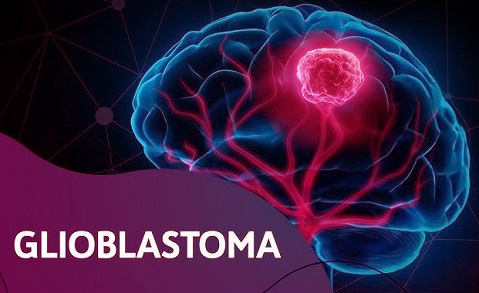Nikhil Prasad Fact checked by:Thailand Medical News Team Oct 06, 2024 11 months, 6 days, 13 hours, 18 minutes ago
Medical News: Glioblastoma, one of the deadliest forms of brain cancer, continues to challenge doctors and patients alike due to its aggressive nature and limited treatment options. However, a team of researchers from the Medical University of Bialystok, Complutense University, and Instituto de Investigación Sanitaria San Carlos IdISSC in Madrid, Spain have turned to nature for answers. This
Medical News report explores their groundbreaking study, which shows that two plant compounds - quercetin and kaempferol - hold promise as potential treatments for glioblastoma.
 Natural compounds show promise as adjuvants for Glioblastoma
Understanding the Challenge of Glioblastoma
Natural compounds show promise as adjuvants for Glioblastoma
Understanding the Challenge of Glioblastoma
Glioblastoma (GBM) is notorious for being resistant to traditional treatment methods, such as surgery, chemotherapy, and radiation. Even after aggressive therapies, patients often face a poor prognosis. The need for new treatment strategies has pushed scientists to explore alternative approaches, including the use of natural compounds.
Quercetin and kaempferol, both belonging to the flavonoid family, are natural compounds found in fruits and vegetables like apples, onions, and berries. Known for their antioxidant and anti-inflammatory properties, these compounds have attracted attention for their potential to fight various cancers, including breast, lung, and ovarian cancers. However, their effects on brain cancers like glioblastoma have been less studied.
This Study's Focus: Quercetin and Kaempferol
In this latest study, researchers set out to investigate the effects of quercetin and kaempferol on glioblastoma cells in the lab. By focusing on the viability of these compounds in human glioma cells (T98G, U118MG, and U87MG), they hoped to uncover new treatment possibilities.
The study revealed that both quercetin and kaempferol significantly reduced the survival rates of glioblastoma cells in a dose-dependent manner. In particular, quercetin showed a slightly higher potential than kaempferol, though both demonstrated notable effects.
How Quercetin and Kaempferol Work on Cancer Cells
The researchers uncovered multiple ways in which these compounds act on cancer cells. Both quercetin and kaempferol induced apoptosis, which is a form of programmed cell death that helps eliminate damaged or unwanted cells. The study found that the compounds increased the activity of caspase enzymes, particularly caspase 3/7 and caspase 9, which are crucial for triggering apoptosis.
Moreover, both compounds caused oxidative stress in the cancer cells. Oxidative stress occurs when there is an imbalance between the production of harmful molecules called reactive oxygen species (ROS) and the body's ability to neutralize them. In this study, quercetin and kaempferol elevated ROS levels in the glioblastoma cells, leading to cell damage and death.
Inducing Stress Responses in Cancer Cells
Another key finding was the involvement of endoplasmic reticulum (ER) stress,
a condition that occurs when the cell’s protein-folding machinery is overwhelmed. The ER stress response is a defense mechanism that aims to restore balance, but when it fails, it can lead to cell death. In this study, both quercetin and kaempferol triggered ER stress in the glioblastoma cells, further contributing to their demise.
The compounds also upregulated specific markers linked to ER stress, such as GRP78 and ERO1α, and activated pro-apoptotic genes like Chop and Atf4. These stress responses work alongside the increased ROS levels to push the glioblastoma cells towards cell death.
Testing in Living Models: Promising Results
To further validate their findings, the researchers moved beyond lab tests and examined the effects of quercetin and kaempferol in an in vivo model. Using the chick chorioallantoic membrane (CAM) assay, they implanted human glioblastoma cells into chicken embryos. After treating the tumors with quercetin and kaempferol, the researchers found that both compounds significantly reduced tumor growth.
Tumors treated with quercetin exhibited greater inhibition compared to those treated with kaempferol, which aligns with the in vitro results. This real-world testing suggests that both compounds could be effective in reducing glioblastoma tumor size in living organisms, though more studies are needed.
Drug-like Properties of Quercetin and Kaempferol
One challenge in developing new cancer therapies is ensuring that the drug can penetrate the blood-brain barrier, a protective shield that prevents harmful substances from entering the brain. The study showed that both quercetin and kaempferol possess drug-like properties, including good blood-brain barrier permeability.
The researchers used electrophoretic light scattering (ELS) to measure the zeta potential of cell membranes, which helps predict whether a compound can pass through the cell membrane. Both quercetin and kaempferol showed promising results in this area, indicating that they could potentially be developed into effective drugs for glioblastoma treatment.
Concluding the Study: A Step Forward in Glioblastoma Treatment
In conclusion, this study provides strong evidence that quercetin and kaempferol could serve as potential therapies for glioblastoma. By reducing cancer cell viability, inducing apoptosis, and triggering both oxidative and ER stress, these natural compounds offer a new approach to tackling this aggressive brain cancer.
While the study’s findings are promising, it’s important to note that further research is required. Future studies will need to explore the long-term effects of these compounds, their interactions with other cancer treatments, and the best ways to deliver them to patients. Animal studies and clinical trials will be crucial for determining the true potential of quercetin and kaempferol as anti-glioblastoma drugs.
The study findings were published in the peer-reviewed International Journal of Molecular Sciences.
https://www.mdpi.com/1422-0067/25/19/10740
For the latest on Glioblastoma, keep on logging to Thailand
Medical News.
Read Also:
https://www.thailandmedical.news/news/new-hope-for-glioblastoma-treatment-orladeyo-shows-promise-in-reducing-cerebral-edema
https://www.thailandmedical.news/news/university-of-mississippi-study-shows-that-juice-of-the-cornelian-cherry-can-help-with-glioblastoma
